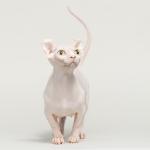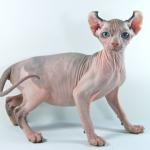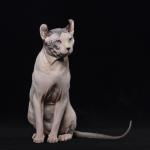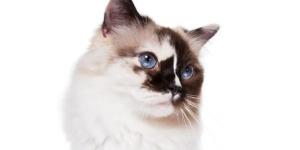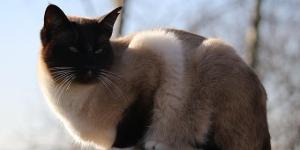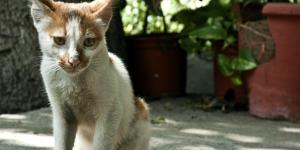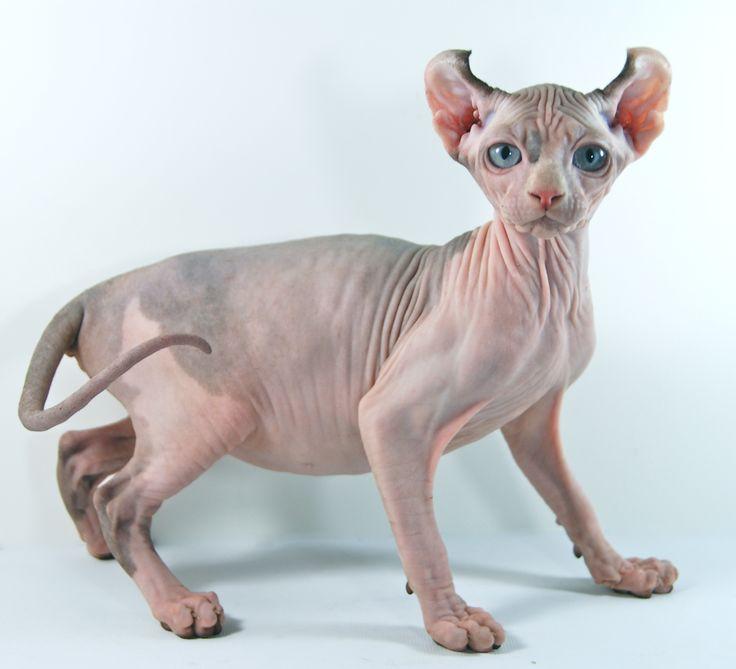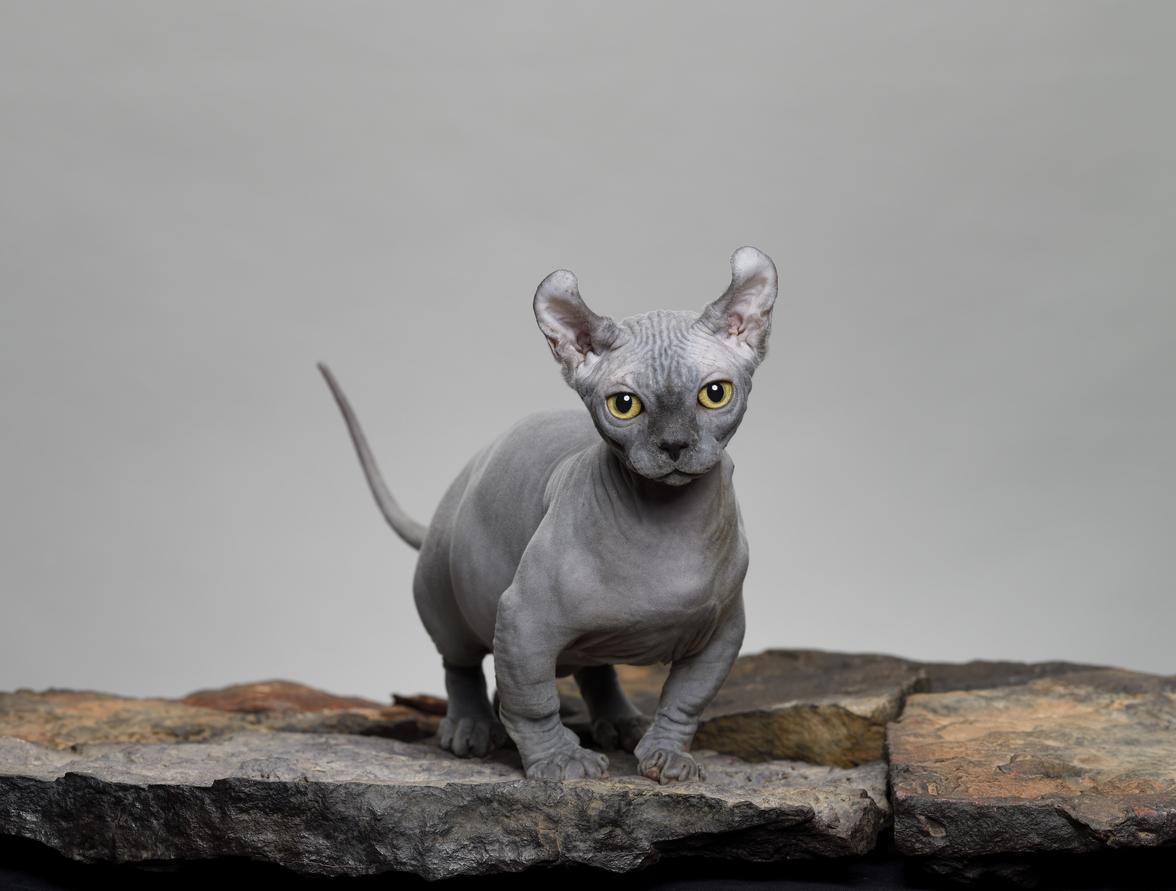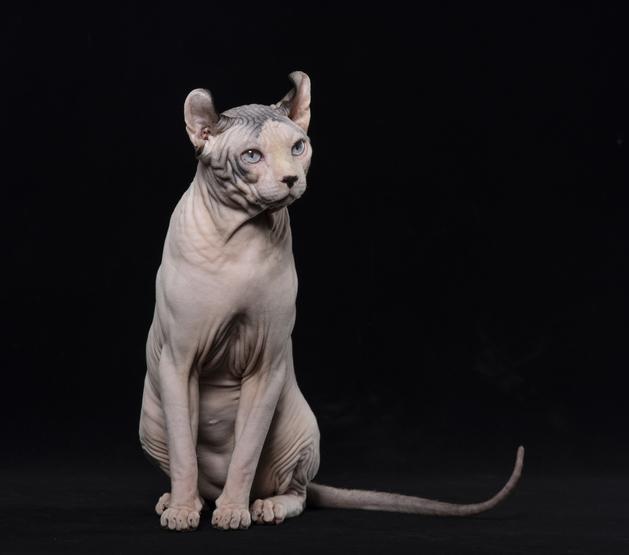Elf Cat
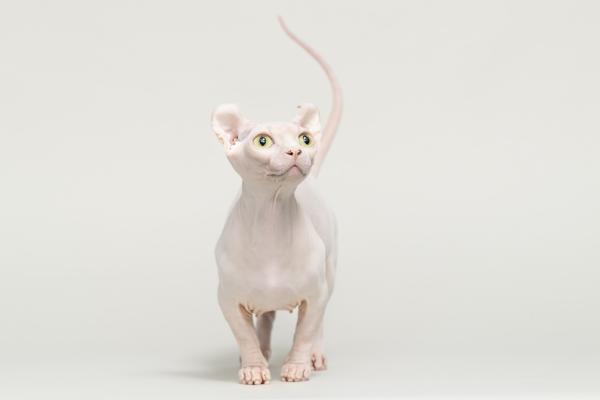
The Elf Cat is a cross between the Sphynx Cat and the American Curl Cat. It is a hairless cat like the Sphynx, but has the characteristic ears of the American Curl, that is, they are curved backward. While it is true that these two characteristics of the elf cat require more thorough care to prevent disease compared to other cats, elf cats make up for it with their exceptional personalities. They are wonderful life companions, affectionate, friendly, active, intelligent and very sociable, adjusting easily to new situations and getting along well with everyone.
Read on in this AnimalWised article to learn all about the elf cat, its origin, characteristics, character, care, possible health problems and where to adopt it.
- America
- United States
- 7-11
- 11-13
- 13-17
- 17-22
- 22-30
- 8-10
- 10-15
- 15-18
- 18-20
Origin of the elf cat
The elf cat is a species of cat from the United States. It is quite rare, as it was created only recently and there are not many specimens in the world. The first Elf Cat was born in 2007 when two enthusiastic cat breeders of American origin, Kristen Leedom and Karen Nelson, got together to cross Sphynx cats with American Curl cats. The result was a kitten with the desired physical traits, i.e., no hair and ears curled back, as well as the best personality traits of both breeds. Essentially, the elf cat is a cross between these two wonderful breeds.
Currently, these cats are gradually being introduced in the salons of the International Feline Association (TICA), but have not yet been recognized as a breed by the World Cat Federation (WCF).
Characteristics of the elf cat
The elf cat is a medium-sized cat that weighs between 3.5 and 7 kg and has a height at the withers of about 30 cm. Their physical appearance is characterized by the absence of hair and their large, bent-backward ears.
Elf cats have somewhat similar bodies to Sphynxes, namely, a semi-straight, well-built, compact, muscular posture and long, thin, but well-developed legs. The tail is long and thin, being wider at the base and thinner at the tip.
The head of the elf cat is elongated, triangular and has prominent cheekbones. The whiskers may be very short and curly or absent. The eyes are large and slanted and can have any shade.
Colors of the Elf Cat
The elf cat is hairless, so its skin is as it is naturally, and so its color or pattern can be white, black, cream, two-toned, three-toned, or any combination of these. Also, their skin has numerous wrinkles all over their body, especially on their head. Although they do not shed, they have a very fine layer of short hairs that are not noticeable to the eye.
Elf cat character
The elf cat is a cat that can adapt very well to different environments, situations, people, and animals. It is a breed that is more tolerant of changes, which can cause great stress in other cats. It is a very sociable and affectionate cat that loves attention and likes to be spoiled by the whole family. Furthermore, it's not uncommon for them to ask for anything at any time. They're always ready to play.
The elf cat has a lot of energy, is very intelligent, mischievous, and curious. For this reason, it usually does not like to rest for a long time, like other breeds, and it also does not tolerate loneliness very well, as they love human company.
Elf cat care
Since they are hairless, it is extremely important that the owners of elf cats are very conscientious in caring for and protecting their delicate skin. The skin is more exposed to high and low temperatures, damage from UV rays from the sun, and the most common skin problems in cats. For this reason, it is critical that these cats do not go outside during hours of maximum sun exposure. They should always be treated with a sunscreen to prevent burns and other damage caused by the sun's rays, such as squamous cell carcinoma. In winter, the house must be tempered to protect them from the cold. It is not a bad idea to dress them in a cat coat and cover them with blankets when they rest.
Brushing these cats is not necessary, but bathing them is a good idea to remove the grease and dirt that their skin naturally produces. You should only do this if it does not stress your cat, and they do not catch a cold. If they can not tolerate bathing or the temperatures are very cold, you can wipe them down with a damp cloth or a cleaning cloth for cats to remove the dirt. It is also important to practice good ear hygiene to prevent excessive accumulation of earwax and debris in the ear folds, which can lead to middle ear infections. It is also critical to clean the eyes and teeth to prevent infection and inflammation of these structures.
Caregivers need to be aware of the fact that elf cats are very active, dependent, energetic, playful cats and take enough time each day to visit, play and interact with them. When they are home alone, it is also essential that the environment is sufficiently enriched to avoid boredom and frustration. To do this, you should provide your cat with high places, enough interactive toys, scratching posts, etc.
Due to the lack of hair and high activity, the energy requirements of these cats are higher than other medium-sized cat breeds, so more food must be given. Their diet must be complete, balanced, and appropriate for the type of cat they are. Water should always be available, and to encourage consumption, you can buy a cat fountain.
If you want to learn more about how to bathe an elf cat, do not miss this other article about bathing a hairless cat.
Elf cat health
The elf cat is a strong and healthy cat with a life expectancy of up to 15 years and without genetic or hereditary diseases. It should be noted that due to the morphology of their ears, they are prone to middle ear infections or inflammation of the ear canal, so hygiene and control of the ears are important to avoid these problems. They are also prone to skin issues such as dermatitis caused by direct contact of their skin with any substance or ambient temperatures.
Of course, to maintain their health, they need a series of veterinary examinations to diagnose and treat diseases, as well as good preventive medicine through vaccinations, deworming and sterilization.
Cats are relatively prone to ear infections, especially long-eared cat breeds. Mites, middle ear infections and other ear issues can be troublesome, but are usually easily treated. Continue reading this other article to learn how to apply ear drops on a cat.
Where to adopt an elf cat?
The elf cat is not a common breed, so it may be extremely difficult to adopt. Because of their rarity, it would also be difficult to find them in Sphynx or American Curl cat rescue clubs.
If you are having trouble adopting a cat, you can always contact your local shelter or animal welfare organization, as every cat there deserves and needs to be adopted responsibly. Remember that a cat is a living being that needs to be cared for, loved and nurtured on a daily basis. It is not a toy or something you can have and return. So before adopting a cat, consider if you are a good candidate who can provide a high quality of life for the cat.
If you are a fan of hairless cats and are interested in adopting one, you can read about other hairless breeds in this other article.
Elf Cat photos
